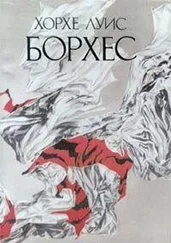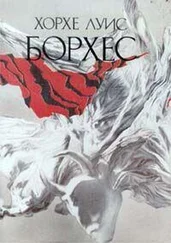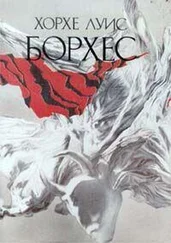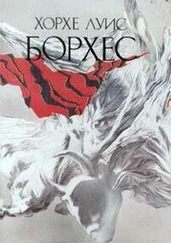Хорхе Борхес - Collected Fictions
Здесь есть возможность читать онлайн «Хорхе Борхес - Collected Fictions» весь текст электронной книги совершенно бесплатно (целиком полную версию без сокращений). В некоторых случаях можно слушать аудио, скачать через торрент в формате fb2 и присутствует краткое содержание. Год выпуска: 1999, ISBN: 1999, Издательство: Penguin (UK), Жанр: Старинная литература, на английском языке. Описание произведения, (предисловие) а так же отзывы посетителей доступны на портале библиотеки ЛибКат.
- Название:Collected Fictions
- Автор:
- Издательство:Penguin (UK)
- Жанр:
- Год:1999
- ISBN:9780140286809
- Рейтинг книги:5 / 5. Голосов: 1
-
Избранное:Добавить в избранное
- Отзывы:
-
Ваша оценка:
- 100
- 1
- 2
- 3
- 4
- 5
Collected Fictions: краткое содержание, описание и аннотация
Предлагаем к чтению аннотацию, описание, краткое содержание или предисловие (зависит от того, что написал сам автор книги «Collected Fictions»). Если вы не нашли необходимую информацию о книге — напишите в комментариях, мы постараемся отыскать её.
Collected Fictions — читать онлайн бесплатно полную книгу (весь текст) целиком
Ниже представлен текст книги, разбитый по страницам. Система сохранения места последней прочитанной страницы, позволяет с удобством читать онлайн бесплатно книгу «Collected Fictions», без необходимости каждый раз заново искать на чём Вы остановились. Поставьте закладку, и сможете в любой момент перейти на страницу, на которой закончили чтение.
Интервал:
Закладка:
History (which, like a certain motion-picture director, tells its story in discontinuous images) now offers us the image of a hazardous bar set in the midst of the all-powerful desert as though in the midst of the sea. The time—one changeable night in the year 1873; the exact place—somewhere on the Llano Estacado, in New Mexico. The land is almost preternaturally flat, but the sky of banked clouds, with tatters of storm and moon, is covered with dry, cracked watering holes and mountains. On the ground, there are a cow skull, the howls and eyes of a coyote in the darkness, fine horses, and the long shaft of light from the bar. Inside, their elbows on the bar, tired, hard-muscled men drink a belligerent alcohol and flash stacks of silver coins marked with a serpent and an eagle. A drunk sings impassively.
Some of the men speak a language with many s's —it must be Spanish, since those who speak it are held in contempt by the others. Bill Harrigan, the red-haired tenement house rat, is among the drinkers. He has downed a couple of shots and is debating (perhaps because he's flat broke) whether to call for another. The men of this desert land baffle him. To him they look huge and terrifying, tempestuous, happy, hatefully knowledgeable in their handling of wild cattle and big horses. Suddenly there is absolute silence, ignored only by the tin-eared singing of the drunk. A brawny, powerful-looking giant of a Mexican with the face of an old Indian woman has come into the bar. His enormous sombrero and the two pistols on his belt make him seem even larger than he is. In a harsh English he wishes all the gringo sons of bitches drinking in the place a buenas noches. No one takes up the gauntlet. Bill asks who the Mexican is, and someone whispers fearfully that the dago (Diego) is Belisario Villagrán, from Chihuahua. Instantly, a shot rings out. Shielded by the ring of tall men around him, Bill has shot the intruder. The glass falls from Villagran's hand; then, the entire man follows. There is no need for a second shot. Without another look at the sumptuous dead man, Bill picks up the conversation where he left off.
"Is that so?" he drawled. "Well, I'm Bill Harrigan, from New York."
The drunk, insignificant, keeps singing.
The sequel is not hard to foresee. Bill shakes hands all around and accepts flattery, cheers, and whiskey. Someone notices that there are no notches on Billy's gun, and offers to cut one to mark the killing of Villagrán. Billy the Kid keeps that someone's knife, but mutters that "Mexicans ain't worth makin' notches for." But perhaps that is not enough. That night Billy lays his blanket out next to the dead man and sleeps—ostentatiously—until morning.
KILLING FOR THE HELL OF IT
Out of the happy report of that gunshot (at fourteen years of age) the hero Billy the Kid was born and the shifty Bill Harrigan buried. The scrawny kid of the sewers and skullcracking had risen to the rank of frontiersman. He became a horseman; he learned to sit a horse straight, the way they did in Texas or Wyoming, not leaning back like they did in Oregon and California. He never fully measured up to the legend of himself, but he came closer and closer as time went on. Something of the New York hoodlum lived on in the cowboy; he bestowed upon the Mexicans the hatred once inspired in him by Negroes, but the last words he spoke (a string of curses) were in Spanish. He learned the vagabond art of cattle driving and the other, more difficult art of driving men; both helped him be a good cattle rustler.
Sometimes, the guitars and brothels of Mexico reached out and pulled him in. With the dreadful lucidity of insomnia, he would organize orgies that went on for four days and four nights. Finally, in revulsion, he would pay the bill in bullets. So long as his trigger finger didn't fail him, he was the most feared (and perhaps most empty and most lonely) man on that frontier. Pat Garrett, his friend, the sheriff who finally killed him, once re-marked: "I've practiced my aim a good deal killing buffalo." "I've practiced mine more'n you have, killing men," Billy softly replied. The details are lost forever, but we know that he was responsible for as many as twenty-one killings—"not counting Mexicans." For seven daring and dangerous years he indulged himself in that luxury called anger.
On the night of July 25,1880, Billy the Kid came galloping down the main (or only) street of Fort Sumner on his pinto. The heat was oppressive, and the lamps were not yet lighted; Sheriff Garrett, sitting on the porch in a rocking chair, pulled out his gun and shot Billy in the stomach. The horse went on; the rider toppled into the dirt street. Garrett put a second bullet in him. The town (knowing the wounded man was Billy the Kid) closed and locked its windows. Billy's dying was long and blasphemous. When the sun was high, the townspeople began to approach, and someone took his gun; the man was dead. They noted in him that unimportant sort of look that dead men generally have.
He was shaved, sewn into tailor-made clothes, and exhibited to horror and mockery in the shop window of the town's best store.
Men on horses or in gigs came in from miles around. On the third day, they had to put makeup on him. On the fourth, to great jubilation, he was buried.
The Uncivil Teacher of
Court Etiquette Kôtsuké no Suké
The iniquitous protagonist of this chapter is the uncivil courtier Kira Kôtsuké no Suké, the fateful personage who brought about the degradation and death of the lord of the castle of Ako yet refused to take his own life, honorably, when fitting vengeance so demanded. He was a man who merits the gratitude of all men, for he awakened priceless loyalties and provided the black yet necessary occasion for an immortal undertaking. A hundred or more novels, scholarly articles, doctoral theses, and operas—not to mention effusions in porcelain, veined lapis lazuli, and lacquer—commemorate the deed. Even that most versatile of media, celluloid, has served to preserve the exploit, for "Chushingura, or The Doctrinal History of the Forty-seven Loyal Retainers" (such is the title of the film) is the most oft-presented inspiration of Japanese filmmaking. The minutely detailed glory which those ardent tributes attest is more than justifiable—it is immediately just, in anyone's view.
I follow the story as told by A. B. Mitford, who omits those continual distractions lent by "local color," preferring instead to focus on the movement of the glorious episode. That admirable lack of "Orientalism" allows one to suspect that he has taken his version directly from the Japanese.
THE UNTIED RIBBON
In the now faded spring of 1702, Asano Takumino Kami, the illustrious lord of the castle of Ako, was obliged to receive an envoy from the emperor and offer the hospitality and entertainment of his home to him. Two thou-sand three hundred years of courtesy (some mythological) had brought the rituals of reception to a fine point of anguished complication. The ambassador represented the emperor, but did so by way of allusion, or symbolically—and this was a nuance which one emphasized too greatly or too little only at one's peril. In order to avoid errors which might all too easily prove fatal, an official of the court at Yedo was sent beforehand to teach the proper ceremonies to be observed. Far from the comforts of the court, and sentenced to this backwoods villégiature (which to him must have seemed more like a banishment than a holiday), Kira Kôtsuké no Suké imparted his instructions most ungraciously. At times the magisterial tone of his voice bordered on the insolent. His student, the lord of the castle of Ako, affected to ignore these affronts; he could find no suitable reply, and discipline forbade the slightest violence. One morning, however, the ribbon on the courtier's sock came untied, and he requested that the lord of the castle of Ako tie it up for him again. This gentleman did so, humbly yet with inward indignation. The uncivil teacher of court etiquette told him that he was truly incorrigible—only an ill-bred country bumpkin was capable of tying a knot as clumsily as that. At these words, the lord of the castle of Ako drew his sword and slashed at the uncivil courtier, who fled—the graceful flourish of a delicate thread of blood upon his forehead-----A few days later, the military court handed down its sentence against the attacker: the lord of the castle of Ako was to be allowed to commit hará kiri. In the central courtyard of the castle of Ako, a dais was erected and covered in red felt, and to it the condemned man was led; he was given a short knife of gold and gems, he confessed his crime publicly, he allowed his upper garments to slip down to his girdle so that he was naked to the waist, and he cut open his abdomen with the two ritual movements of the dirk. He died like a Samurai; the more distant spectators saw no blood, for the felt was red. A white-haired man of great attention to detail—the councillor Oishi Kuranosuké, his second—decapitated his lord with a saber.
Читать дальшеИнтервал:
Закладка:
Похожие книги на «Collected Fictions»
Представляем Вашему вниманию похожие книги на «Collected Fictions» списком для выбора. Мы отобрали схожую по названию и смыслу литературу в надежде предоставить читателям больше вариантов отыскать новые, интересные, ещё непрочитанные произведения.
Обсуждение, отзывы о книге «Collected Fictions» и просто собственные мнения читателей. Оставьте ваши комментарии, напишите, что Вы думаете о произведении, его смысле или главных героях. Укажите что конкретно понравилось, а что нет, и почему Вы так считаете.












